9 best places to see in Chengdu China 2020 - Find the best and attractive places to see in Chengdu China, In the region of Sichuan, one of China's driving rice and wheat developing areas, the city of Chengdu has assumed a critical job in the nation's history for a huge number of years. Be that as it may, it was under the Qin and Han Dynasty of around 316 BC that it turned into the political, financial, and social focus of southwest China, and still, after all, that was acclaimed for its rearing of silkworms and weaving of brocade.
By the time of the Three Kingdoms from 220-280 AD, Chengdu had turned into the capital of the territory of Shu Han and by the eighth century, was a critical focus of exchange, business, and industry, striking for its lacquered and silver filigree work.
Amid the administer of the Five Dynasties from 907-960 AD, Emperor Meng Chang organized expansive quantities of hibiscus trees to be planted along with the town dividers and roads, a custom that proceeds right up 'til the present time and gives the city its epithet, Hibiscus City (Rong Cheng). Nowadays, Chengdu is a noteworthy mechanical town and is experiencing a huge development barrage. It's additionally a prime social goal, home to 14 schools, including Sichuan University, and also numerous customary teahouses and tea gardens.
By the time of the Three Kingdoms from 220-280 AD, Chengdu had turned into the capital of the territory of Shu Han and by the eighth century, was a critical focus of exchange, business, and industry, striking for its lacquered and silver filigree work.
Amid the administer of the Five Dynasties from 907-960 AD, Emperor Meng Chang organized expansive quantities of hibiscus trees to be planted along with the town dividers and roads, a custom that proceeds right up 'til the present time and gives the city its epithet, Hibiscus City (Rong Cheng). Nowadays, Chengdu is a noteworthy mechanical town and is experiencing a huge development barrage. It's additionally a prime social goal, home to 14 schools, including Sichuan University, and also numerous customary teahouses and tea gardens.
1. Chengdu Research Base of Giant Panda Breeding
The Chengdu Research Base of Giant Panda Breeding does not just offer an opportunity to see these stunning animals very close in their common habitat, it likewise gives an inside and out investigates these laidback creatures. Set up in 1987, the office started with only six saved mammoth pandas, a number that has since developed to surpass 80 creatures. Visits likewise incorporate an opportunity to visit the on-location historical center including shows managing the regenerative issues of these flighty bears.
Frequently discovered dozing, pandas are their liveliest amid morning sustaining times, so plan your trek in like manner. For an opportunity to see pandas in the wild, book an outing to the immense Wolong Nature Reserve 130 kilometers west of Chengdu. Covering a zone of 2,000 square kilometers, this brilliant protection territory is encompassed by mountains and is home to 60 distinct sorts of vertebrates, and also 300 types of flying creatures and 4,000 sorts of plants, including mammoth redwood trees.
2. The Wenshu Monastery (Manjushri Monastery)
Covering a zone of in excess of 12 sections of land, the Manjushri Temple complex includes five separate sanctuaries worked from wood and stone. The complex was built in 1691 over the remnants of a prior religious community dating from the season of the Southern Dynasties between 420-589 AD. Features incorporate the Hall of Shuofa Tang with its 10 press statues of Buddhist watchman divine beings from the Song time of 960-1279 AD, and in addition the in excess of 100 bronze models of Buddhas and Buddhist holy people from the Qing time between 1644-1911 and numerous more produced using materials, for example, jade and wood. The site additionally contains various other vital social relics, including works of art and calligraphy by driving Chinese specialists and journalists.
3. Du Fu Thatched Cottage
The sprawling Du Fu Thatched Cottage complex (Dù Fǔ Cǎo Táng) covers 24 sections of land and is devoted to one of China's best-known writers. The site reproduces the home in which Du Fu lived somewhere in the range of 759 and 763 AD and in which he composed more than 250 of his best-known ballads. On a pleasant curve of the Huanhuaxi River, the intricate highlights lavish patio nurseries, various structures, and flawless extensions and pathways.
4. Wangjianglou Park and River Watching Tower
Celebrated as the area where poetess Xue Tao lived from 769-834 AD, the River Watching Tower in Wangjianglou Park is eminent for its mind-blowing 30-meter-tall pinnacle. Worked in 1889, the fascination includes the popular old wellspring from the Tang time of 618-907 AD from which the poetess is said to have attracted the water used to create the interesting red paper on which she composed, and which right up 'til today still bears her name.
Likewise of note are a few different structures committed to her memory, including the Tower of Poetic Recitation (Yinshi Lou), the Pavilion of the Washing of Paper (Wanjian Ting). Another stunning element is a huge bamboo woods spread out in her memory (on the whole, the site flaunts 140 unique types of bamboo, a tree the poetess was especially enamored with).
5. The Yongling Mausoleum
Additionally alluded to as the Eternal Mausoleum, the Yongling Mausoleum is the place you'll locate the very much saved tomb of Wang Jian, leader of the Early Shu Empire until his demise in 918 AD. In the northwest area of Chengdu, this flawless 15-meter-high working with its 14 great openings opened to general society in 1942 and is isolated into three chambers, the focal of which houses the ruler's dazzlingly designed stone coffin. Different features of a visit incorporate a fine stone statue of Wang Jian and point by point wall paintings of 24 performers cut from stone and the main such embellishments of their kind from the Tang Dynasty.
6. Chengdu Cultural Park and the Sichuan Opera
In Chengdu's Cultural Park (Wenhua Gongyuan) in the western piece of the city stands the old Taoist Qingyang Temple dating from the Tang time of 618-907 AD (the present structures are from the Qing time frame between 1644-1911). Specific features incorporate the Pavilion of the Eight Trigrams (Bagua Ting) with its eight stone columns and mind-boggling carvings of mythical beasts and different images from Chinese culture. The recreation center is likewise where you'll discover the Shufeng Sichuan Opera House, one of the city's most critical social goals and home to various standard exhibitions of conventional Chinese music and theater.
7. The Monastery of Precious Light
In the residential area of Xindu, only 18 kilometers upper east of Chengdu, the Monastery of Precious Light (Baoguang Si) is well worth setting aside the opportunity to visit. Thought to date from the Han Dynasty of 24-220 AD, this huge complex comprises of in excess of 20 all around saved structures developed in 1670 including a fine pagoda, five sanctuaries, and 16 yards scattered over a zone of exactly 20 sections of land.
Maybe the most amazing of all is the 13-story Sarira Pagoda that has survived flawlessly from the Tang time of 618-907. Different features are archeological showcases incorporating a stone tablet with 1,000 Buddha reliefs dating from 540 AD and in addition 500 overwhelming earthenware statues from the Qing time of 1644-1911.
Maybe the most amazing of all is the 13-story Sarira Pagoda that has survived flawlessly from the Tang time of 618-907. Different features are archeological showcases incorporating a stone tablet with 1,000 Buddha reliefs dating from 540 AD and in addition 500 overwhelming earthenware statues from the Qing time of 1644-1911.
8. Chengdu Huangcheng Mosque
One of China's most imperative Muslim destinations, the Chengdu Huangcheng Mosque goes back to the eighteenth century and is in the core of the city's old Xicheng District. Albeit seriously harmed by a Japanese air strike in 1941, the site emerges for its blend of customary Chinese and Arabic-impacted design with its white dividers and vivid twists and is eminent for its extensive 16-meter-long supplication corridor canvassed in unique tiles. Different features incorporate the appealing focal yard, its two doors, and also a library containing many squares printed Korans written in both Arabic and Chinese. To take in the correct date the building was developed, search for the bar with a plaque that peruses: "The seventh year of the realm of Qianlong" (the appropriate response is 1742).
9. Jianmen Pass and Scenic Route
Available from Chengdu along the antiquated Sichuan Road (Shudao), the Jiangmen Scenic Route, in spite of the fact that around excursion of in excess of 300 kilometers, is frequently incorporated into the agenda for formalized visit gatherings, and is definitely justified even despite a visit for those voyaging solo or in littler gatherings by means of expert visits withdrawing routinely from the city.
About China Tourism
All through the long time since Europeans originally read with amazement Marco Polo's record of a 20-year visit at the court of Kublai Khan, the West has viewed China as the exemplification of all that is abnormal and fascinating. Indeed, even today the nation has lost none of its interest, its absolutely extraordinary culture going back over 5000 years making each visit a very uncommon ordeal.
Exceptional castles, for example, the Forbidden City and Summer Palace in Beijing review the times of China's administer by heavenly sovereigns, mistresses, and eunuchs. The Great Wall - at its most noteworthy where it passes only a little toward the north of Beijing - twists for 6700 km (4000 mi.) westbound from the Yellow Sea to Jiayuguan in Central Asia.
Old sanctuaries, for example, the religious sanctuary of the Princess of the Azure Cloud on Mount Taishan or the Confucian Temple in Qufu radiate the soul of age-old Eastern religions and methods of insight. The urban areas of the Middle Kingdom, more than 50 of which have populaces of over a million, and the waterfront territories, are today getting a charge out of taking off the financial blast.
This immense Asian nation, large as a landmass, offers the boundless degree for movement in scenes as fluctuated as the hot wildernesses of south Yunnan, the strong snow-clad piles of the west, and the unending Central Asian deserts along the old Silk Road.
Exceptional castles, for example, the Forbidden City and Summer Palace in Beijing review the times of China's administer by heavenly sovereigns, mistresses, and eunuchs. The Great Wall - at its most noteworthy where it passes only a little toward the north of Beijing - twists for 6700 km (4000 mi.) westbound from the Yellow Sea to Jiayuguan in Central Asia.
Old sanctuaries, for example, the religious sanctuary of the Princess of the Azure Cloud on Mount Taishan or the Confucian Temple in Qufu radiate the soul of age-old Eastern religions and methods of insight. The urban areas of the Middle Kingdom, more than 50 of which have populaces of over a million, and the waterfront territories, are today getting a charge out of taking off the financial blast.
This immense Asian nation, large as a landmass, offers the boundless degree for movement in scenes as fluctuated as the hot wildernesses of south Yunnan, the strong snow-clad piles of the west, and the unending Central Asian deserts along the old Silk Road.
Northern China presents sightseers with a rich scope of chances, from riding shaggy horses through the immense field of the Inner Mongolian steppe, dozing in a Mongolian yurt, visiting Kasak wanderers in the Altai and partaking in the antiquated military specialty of kung fu at the Shaolin Monastery, to investigating the noteworthy Buddhist holes at Datong and Luoyang and participating in the festival of the Ice Festival in the fresh winter ice of Manchuria.
The interest of southern China lies not just in the sparkling, customers' heaven of Hong Kong, where East meets West in one of a kind union, nor in Portuguese Macao, yet similar in the Guilin Mountains, a karst scene of genuinely children's story excellence unmatched anyplace on the planet.
Regardless of whether it be an extravagance voyage through the pleasant Changjiang pigs out, a visit to Jingdezhen to comprehend the insider facts of the well known Chinese porcelain producers, a walk around the otherworldly gardens at Suzhou, a gourmet outing into the culinary capital Canton to test the different styles of Chinese cooking, a climb of the heavenly Mount Emeishan in Sichuan, an excursion to Lesham to wonder about the world's biggest Buddha, or simply sunbathing on palm-bordered Beaches in Hainan, China has something for each taste and henceforth all the basic elements for an extraordinary occasion in an outstandingly engrossing nation.
The interest of southern China lies not just in the sparkling, customers' heaven of Hong Kong, where East meets West in one of a kind union, nor in Portuguese Macao, yet similar in the Guilin Mountains, a karst scene of genuinely children's story excellence unmatched anyplace on the planet.
Regardless of whether it be an extravagance voyage through the pleasant Changjiang pigs out, a visit to Jingdezhen to comprehend the insider facts of the well known Chinese porcelain producers, a walk around the otherworldly gardens at Suzhou, a gourmet outing into the culinary capital Canton to test the different styles of Chinese cooking, a climb of the heavenly Mount Emeishan in Sichuan, an excursion to Lesham to wonder about the world's biggest Buddha, or simply sunbathing on palm-bordered Beaches in Hainan, China has something for each taste and henceforth all the basic elements for an extraordinary occasion in an outstandingly engrossing nation.
Places to Near Chengdu
Mount Emei and its Temples
Mount Emei (Emeishan), devoted to the Bodhisattva Puxian, stands 160 kilometers southwest of Chengdu and is definitely justified even despite a visit. The mountain's most elevated pinnacle, the Peak of the Ten Thousand Buddhas (Wanfo Ding), achieves a tallness of 3,099 meters and is loved by Chinese Buddhists as one of the four Holy Mountains, the others being Mount Wutaishan in Shanxi territory, Mount Jiuhuashan in Anhui region, and Mount Putuoshan in Zhejiang region.
As covered in fantasies and legends as it is in mists and fogs, the principal Taoist sanctuaries on Mount Emei were worked amid the Eastern Han tradition from 25-220, and from the Tang time of 618-907 AD onwards, it ended up one of the significant goals of Buddhist pioneers because of its in excess of 200 altars (20 sanctuaries religious communities still survive).
As covered in fantasies and legends as it is in mists and fogs, the principal Taoist sanctuaries on Mount Emei were worked amid the Eastern Han tradition from 25-220, and from the Tang time of 618-907 AD onwards, it ended up one of the significant goals of Buddhist pioneers because of its in excess of 200 altars (20 sanctuaries religious communities still survive).
The Dujiangyan Irrigation System
Developed in 250 BC, the entrancing Dujiangyan Irrigation System close to the town of Guanxian on the upper ranges of the Minjiang River, nearly 55 kilometers northwest of Chengdu, is certainly justified regardless of a visit. Built to forestall calamitous flooding, this astounding framework incorporated a system of earth dams with areas stretching out into tributaries and waterways to inundate fields.
The framework includes strikingly named segments, for example, the Fish's Jaws, which works like a watershed and barrier, the weir known as Flying Sands (Feisha Yan), and the channel, the Neck of the Precious Bottle (Baoping Kou). Because of this cunning framework, the Minjiang hasn't overflowed for over 2,200 years, and the Chengdu Plain of focal Sichuan has turned out to be one of China's most fruitful areas.
The framework includes strikingly named segments, for example, the Fish's Jaws, which works like a watershed and barrier, the weir known as Flying Sands (Feisha Yan), and the channel, the Neck of the Precious Bottle (Baoping Kou). Because of this cunning framework, the Minjiang hasn't overflowed for over 2,200 years, and the Chengdu Plain of focal Sichuan has turned out to be one of China's most fruitful areas.

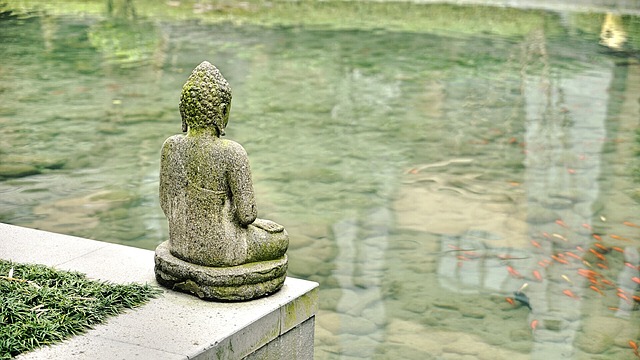
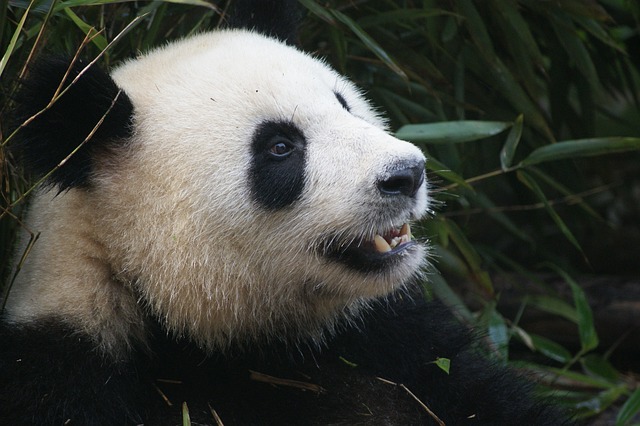

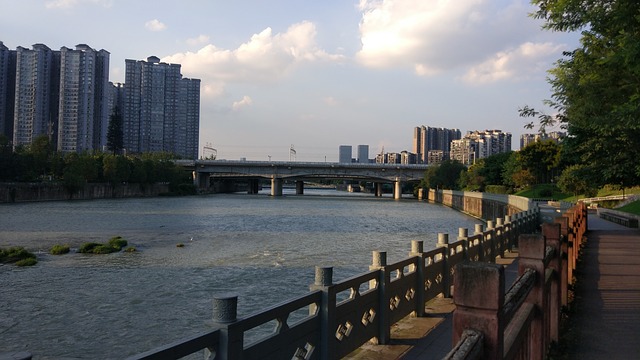
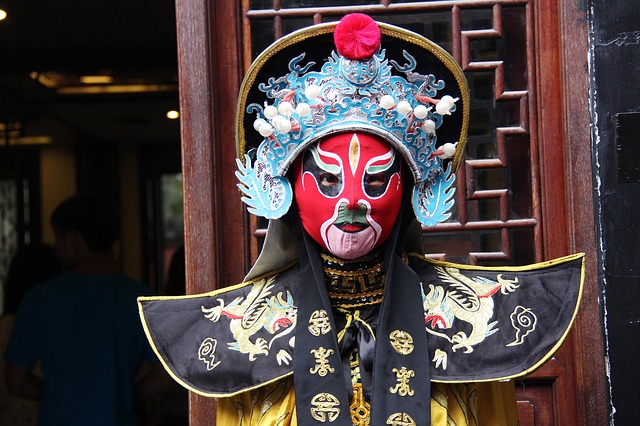
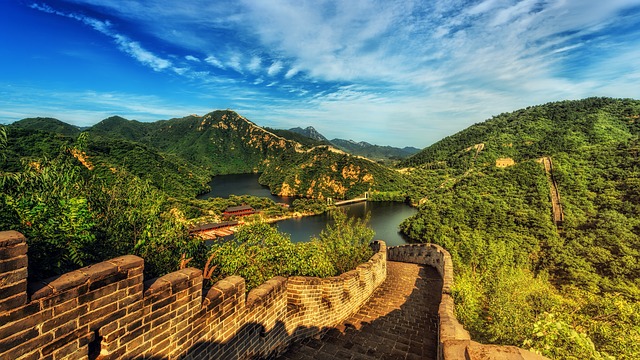













Nice article
ReplyDeletethanks
Delete